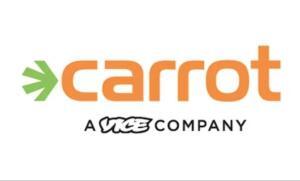Carrot Creative – Your Marketing Partner
Table of Contents
Creative Carrot, a digital agency known for its work with brands such as Jaguar, MTV, Rolex, and Disney, experienced a rollercoaster journey from being acquired by media giant Vice to being embroiled in a harassment scandal that ultimately led to its merger with another agency. In this article, we’ll delve into the timeline of these events, the impact of the merger, and the challenges faced by both Vice and Creative Carrot, as well as how the industry can learn from this cautionary tale.
Table of Contents
Acquisition by Vice:
In a bid to expand its digital content offerings and develop new advertising products, Vice acquired Creative Carrot for an undisclosed sum. The digital agency, founded in 2004, had an impressive roster of clients, including MTV, Bloomberg Sports, Bravo, AOL, and the NFL. The acquisition aimed to bolster Vice’s in-house web and mobile team, allowing for the further development of app and mobile platforms, and the convergence of media and technology.
Carrot’s co-founders, Mike Germano and Chris Petescia, expressed excitement about joining forces with Vice, describing it as a “steroid injection” for their ambitions. Andrew Creighton, the president of Vice, shared similar enthusiasm, stating that the partnership would “disrupt the absurdity of the current hegemony” and create a new world order in media. Vice’s acquisition of Creative Carrot was seen as a significant move, signaling a growing trend of media companies acquiring ad agencies to enhance their digital capabilities.
The Partnership in Action:
Following the acquisition, Creative Carrot began working alongside Vice’s in-house teams to develop new distribution technologies and advertising products. The partnership initially appeared to be fruitful, as both companies continued to grow and attract high-profile clients. The acquisition also allowed Vice to tap into Creative Carrot’s expertise in digital strategy and analytics, positioning itself as a strong contender in the increasingly competitive digital media landscape.
Harassment Allegations and the Beginning of the End:
However, the promising partnership was soon marred by controversy. In January 2018, following allegations of sexual harassment against Mike Germano and Andrew Creighton in a New York Times article, Vice suspended both executives. Germano, who served as the CEO of Creative Carrot and Chief Digital Officer at Vice, was placed on a leave of absence while the allegations were investigated.
In the midst of this turmoil, Vice decided to merge Creative Carrot with its in-house creative agency, Virtue. The merger had reportedly been in the works for some time, with some sources claiming discussions began as early as November 2017. The idea behind the merger was to consolidate the two agencies, both of which essentially served the same purpose within the company.
The Merger and Its Aftermath:
According to a memo sent by Vice’s COO and CFO, Sarah Broderick, the integrated agency would continue under the Virtue name, combining their complementary offerings under one organization. The merger aimed to streamline operations, enhance collaboration between teams, and ultimately deliver more value to clients.
The merger was planned for the first quarter, but the suspension of Germano and other personnel moves accelerated the process. In the wake of the New York Times story, Virtue reportedly lost clients, and major marketers began expressing concerns about their relationship with Vice. The scandal cast a shadow over the once-promising partnership, causing many in the industry to question the wisdom of media companies acquiring ad agencies.
Lessons Learned and Moving Forward:
The story of Creative Carrot serves as a cautionary tale in the world of media and advertising. While the acquisition by Vice initially signaled a bright future for the digital agency, harassment allegations against key executives ultimately led to its merger with Virtue.


